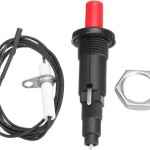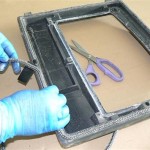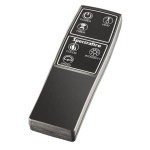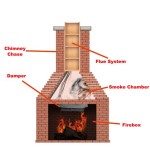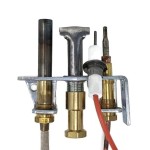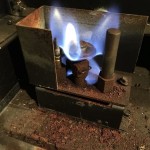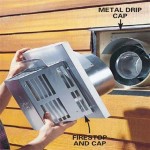Best Programmable Thermostats for Gas Fireplaces: A Comprehensive Guide
Gas fireplaces offer a convenient and aesthetically pleasing alternative to traditional wood-burning fireplaces. The ability to ignite and extinguish them with the flip of a switch or the press of a button provides instant warmth and ambiance. However, like any heating system, efficiency and control are paramount. A programmable thermostat specifically designed for gas fireplaces can significantly enhance the user experience by automating temperature regulation and reducing energy consumption.
Selecting the right programmable thermostat for a gas fireplace involves considering several factors, including compatibility, features, ease of use, and smart home integration. This article provides an in-depth exploration of these considerations, examining some of the best programmable thermostats available to optimize the performance of a gas fireplace.
Understanding Programmable Thermostats and Gas Fireplace Compatibility
Not all programmable thermostats are created equal, and compatibility with a gas fireplace is a critical first step. Standard thermostats used for furnaces and air conditioners often operate on higher voltages (120V or 240V). Gas fireplaces, however, typically use low-voltage (24V) systems. Connecting a high-voltage thermostat to a low-voltage gas fireplace can damage the fireplace's control system and potentially create a safety hazard.
Therefore, it is essential to choose a thermostat specifically designed for low-voltage applications or one that is explicitly compatible with gas fireplaces. These thermostats often feature a "millivolt" setting, referring to the small electrical current generated by the fireplace's pilot light that can be used to power the thermostat. If the fireplace lacks a pilot light and relies on an electronic ignition system, the thermostat must be compatible with that system.
Before purchasing any programmable thermostat, consult the gas fireplace's installation manual or contact the manufacturer to confirm compatibility. This will prevent damage to the fireplace and ensure safe and reliable operation.
Moreover, it is important to identify the wiring configuration of the existing thermostat. Gas fireplaces usually employ a two-wire system, where a simple connection between the two wires turns the fireplace on and off. Some fireplaces might need a three-wire or four-wire configuration for additional features, such as remote control or flame height adjustment. This information is crucial to ensure that the replacement programmable thermostat can be correctly wired.
Key Features to Consider in a Programmable Thermostat for Gas Fireplaces
Beyond compatibility, several features can enhance the functionality and convenience of a programmable thermostat for a gas fireplace. These features contribute to energy efficiency, improved temperature control, and ease of use.
Programmability: The core function of a programmable thermostat is its ability to set different temperature schedules for different times of the day and days of the week. This allows users to tailor the fireplace's operation to their lifestyle, ensuring the fireplace only runs when needed. Most programmable thermostats offer 7-day, 5-2, or 5-1-1 programming options. A 7-day program allows for independent schedules for each day of the week, while a 5-2 program allows for one schedule for weekdays and another for weekends. The 5-1-1 program offers a separate schedule for Saturday and Sunday.
Temperature Display and Accuracy: A clear and easy-to-read temperature display is crucial for monitoring the room temperature and adjusting the thermostat accordingly. The accuracy of the temperature sensor is also important to ensure that the fireplace maintains the desired temperature consistently. Look for thermostats with a resolution of 1 degree Fahrenheit or Celsius for precise temperature control.
Backlit Display: A backlit display enhances visibility, particularly in dimly lit rooms or at night. This feature makes it easier to read the temperature and adjust the settings without needing additional lighting.
Override Function: An override function allows users to temporarily deviate from the programmed schedule. This is useful when unexpected changes occur, such as a sudden drop in temperature or the arrival of guests. The override function should be easy to activate and deactivate, returning the thermostat to its programmed schedule after a specified period.
Hold Function: A hold function allows users to maintain a constant temperature indefinitely, overriding the programmed schedule until manually deactivated. This is useful when the house is unoccupied for an extended period or when a consistent temperature is desired regardless of the time of day.
Learning Capabilities: Some advanced thermostats incorporate learning capabilities, which analyze user behavior and automatically adjust the heating schedule based on occupancy patterns. This feature can further optimize energy efficiency and improve comfort levels.
Remote Control Capabilities: Certain thermostats are equipped with remote control capabilities, allowing users to adjust the temperature from across the room or even from a different location using a smartphone or tablet. This feature can be particularly convenient for those with mobility issues or when it is impractical to physically access the thermostat.
Smart Home Integration: Many modern thermostats offer integration with smart home ecosystems, such as Amazon Alexa, Google Assistant, and Apple HomeKit. This allows users to control the fireplace using voice commands or integrate it into automated routines with other smart home devices.
Evaluating Specific Thermostat Models for Gas Fireplaces
Several programmable thermostats are suitable for use with gas fireplaces. Each model boasts unique features and capabilities, catering to different user preferences and needs. Before choosing a thermostat, it is important to compare and contrast the available options based on the aforementioned criteria.
Some of the key features to look for include the presence of a millivolt setting, compatibility with the fireplace's wiring configuration, ease of installation, user-friendliness, and availability of desired features like remote control and smart home integration.
Many brands offer programmable thermostats marketed for gas fireplace use. Reviewing user testimonials and professional evaluations will help determine which thermostat is most suitable for a given fireplace.
Installation Considerations: The installation process of a programmable thermostat for a gas fireplace is usually straightforward but requires careful attention to detail. Before starting the installation, disconnect the power supply to the fireplace to prevent electrical shock. Carefully remove the existing thermostat, noting the wiring connections. Connect the wires of the new thermostat to the corresponding terminals on the fireplace's control system, ensuring that the connections are secure. Consult the thermostat's installation manual for detailed instructions and wiring diagrams. After completing the wiring, securely mount the thermostat on the wall and restore power to the fireplace. Test the thermostat to ensure that it is functioning correctly and that the fireplace is responding to the temperature settings.
Maintenance and Troubleshooting: Programmable thermostats for gas fireplaces generally require minimal maintenance. However, it is important to periodically check the thermostat's display and buttons for any signs of damage or malfunction. If the thermostat is battery-powered, replace the batteries regularly to ensure uninterrupted operation. If the thermostat is not functioning correctly, consult the troubleshooting section of the installation manual or contact the manufacturer for assistance. Common issues include incorrect wiring, faulty temperature sensors, and battery depletion. Resolving these issues promptly will ensure that the thermostat functions efficiently.
In addition to these factors, it is crucial to consider the aesthetic design of the thermostat. A thermostat's appearance should complement the décor of the surrounding room. Many thermostats are available in various colors, styles, and finishes. Choosing a thermostat that aesthetically blends with the fireplace and the room's interior design will enhance the overall appearance of the living space.
Choosing the right programmable thermostat requires a careful evaluation of these factors. The user requirements and the specifications of the fireplace will guide the selection process.

Skytech Ts 3 Wired Wall Mounted Thermostat Fireplace Control

Honeywell Home T5 7 Day Programmable Thermostat With Digital Backlit Display Rth7560e The Depot

Honeywell Wi Fi 7 Day Programmable Thermostat Toronto Best S

Honeywell Home Rth2300b 24 Volt 5 2 Day Programmable Thermostat In The Thermostats Department At Com

Flameworks Gas Fireplace Thermostat Non Programmable Vertical Mount Fire Parts Ca

Honeywell Home Rth221b 1 Week Programmable Thermostat Canadian Tire

Thermostats The Home Depot

Honeywell 5 2 Day Programmable Thermostat With Backlight White 3 Fry S Food

Honeywell Pro 4000 5 2 Day Programmable Thermostat Toronto Best

Honeywell Home Wi Fi 7 Day Programmable Smart Thermostat With Digital Backlit Display Rth6580wf The Depot
Related Posts

